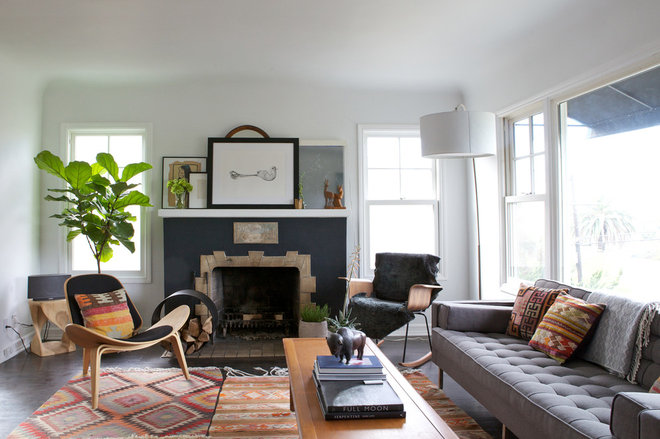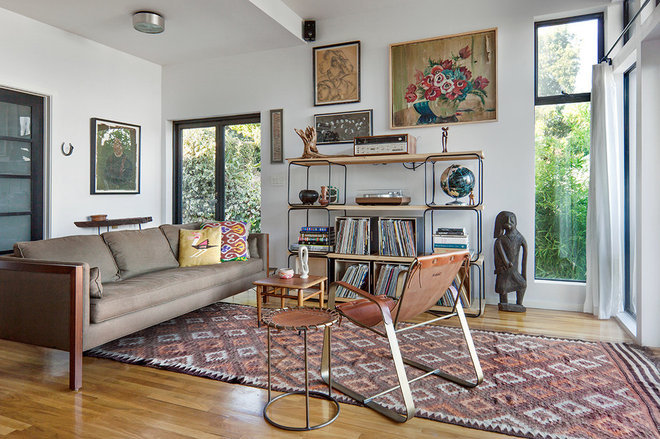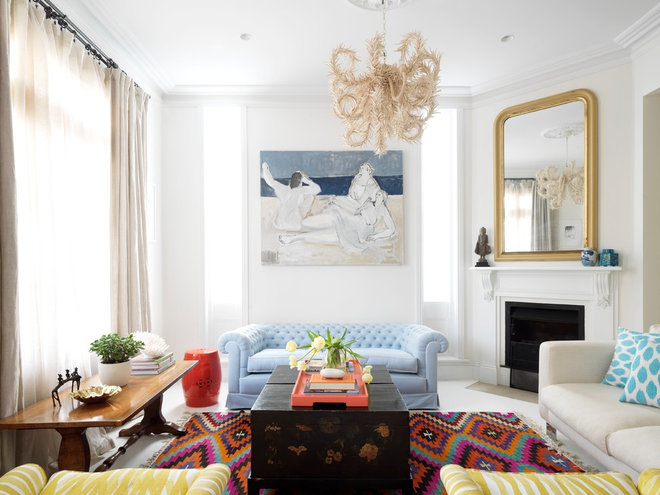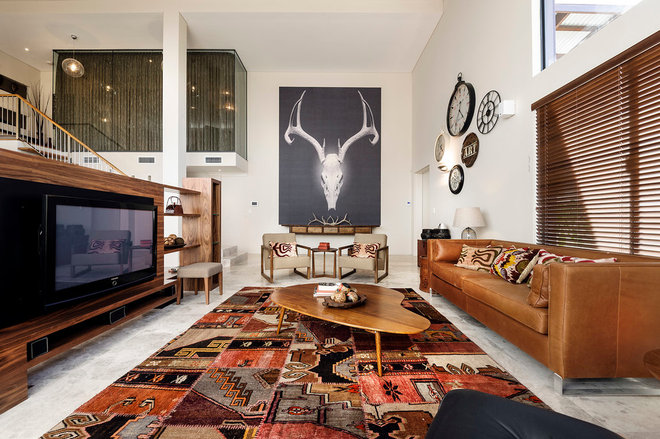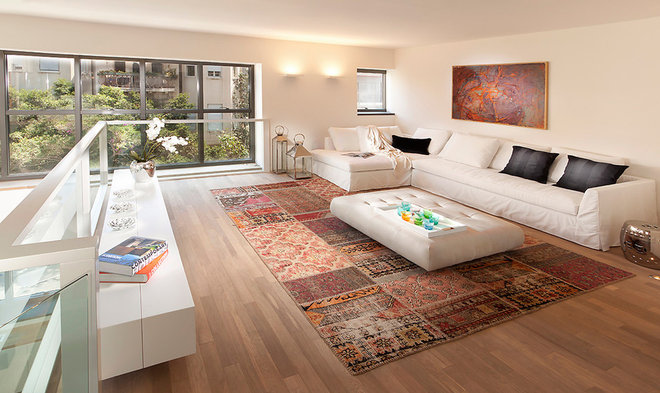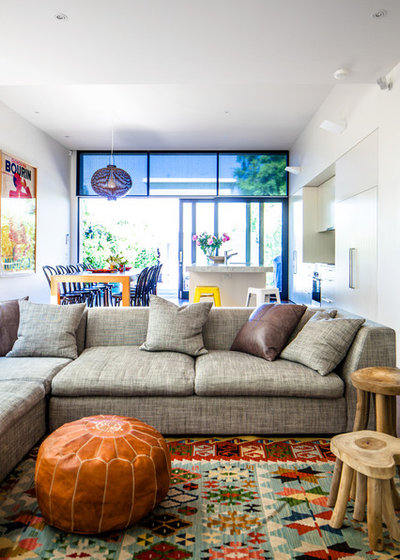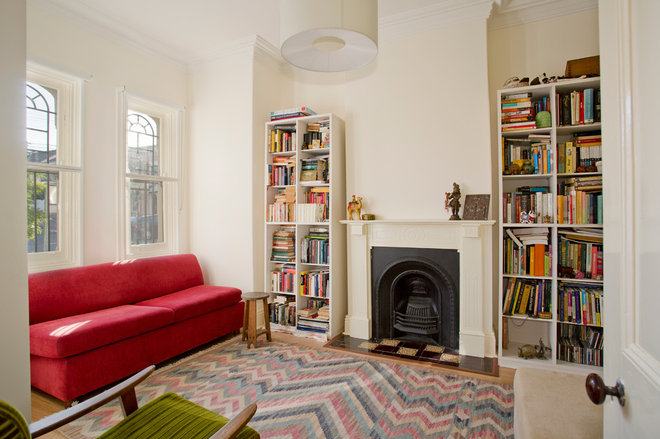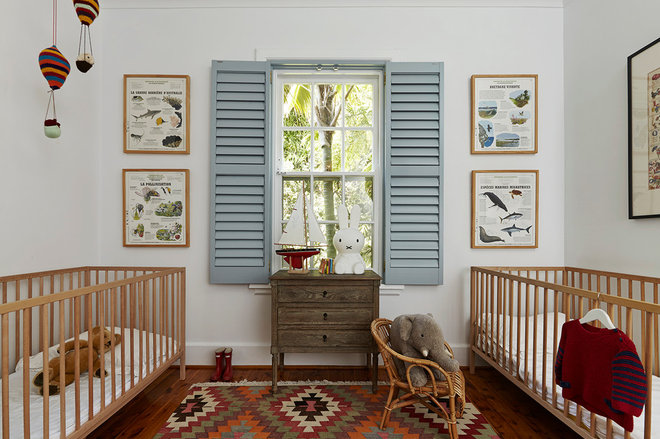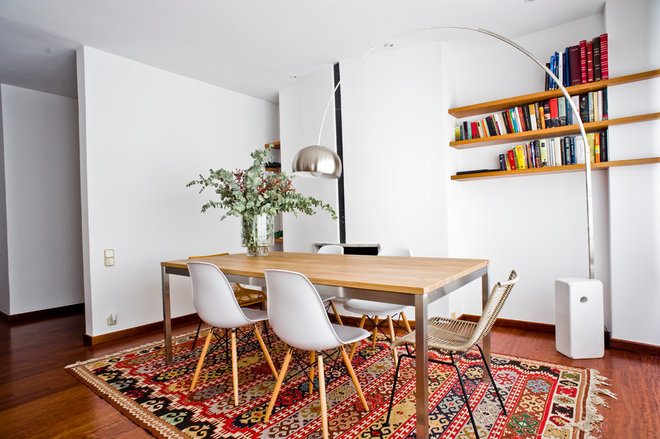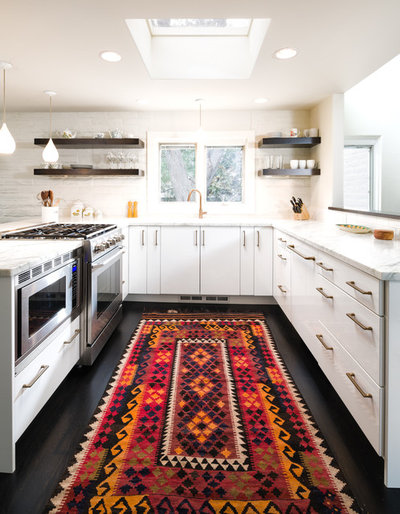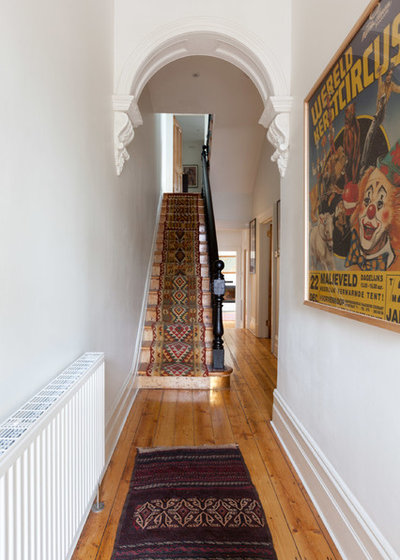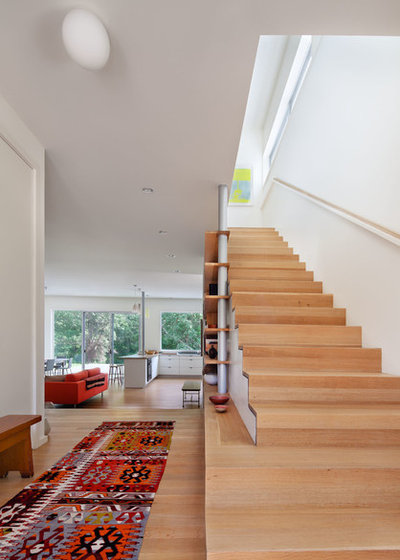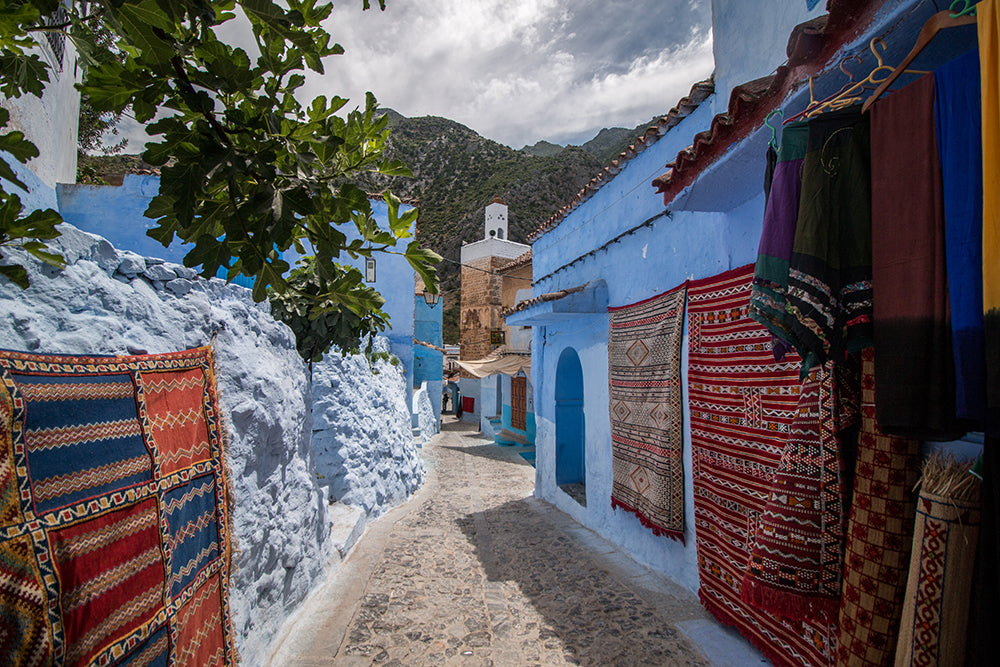
A kilim rug is produced by tight interweaving to create a flat surface with no pile. Kilims are generally woven with a slit-weave technique, which produces very sharp-etched designs that emphasise the geometry of the weave. Bold diagonal patterns are often favoured as they strengthen the structure of the rug.Kilims are made of natural materials such as wool, cotton, sisal, goat hair and jute. The visible weft strands carry the design and colour and are almost always wool, while the hidden warp strands can be wool or cotton. Due to the basket-style weaving technique, most kilims have the same design front and back.
The true origin of kilim rugs is relatively unknown. Some historical evidence suggests that rug making dates back to Neolithic times of 6,000 BC, when flat-weave rugs had motifs and symbols rooted in prehistoric Anatolia (present-day Turkey). However, what are believed to be the earliest actual examples of rugs date from 500-700 BC, and are from the Pazyryk area of the Siberian Altai Mountains region.
Kilim rugs evolved as a craft form from utilitarian weaving, but the lack of physical evidence means tying the origins of the generic kilim rug to a specific time and place is difficult. Groups dispersed over vast geographic areas probably developed their own techniques individually.
Kilim rugs are a highly regarded folk art and an expression of the region in which they are woven; a region’s culture and tradition will be expressed through colours, styles, patterns and symbolism.As kilims come from such an extensive area of land and each one is so unique, it’s difficult to cover the variety of styles comprehensively. Rather, you’ll see a range of styles of kilim rugs in the images to follow.
A kilim rug is extremely versatile and an affordable way to style various spaces in the home.
This kilim suits the eclectic living space, which features colourful characters and patterns throughout.
Kilims are a practical option for dining areas as they are lightweight and easy to shake out. Natural fibres mean they can be spot cleaned with mild soap and water, while colours and patterns hide crumbs and spills. And should any stains occur, just flip the rug over. They’re the same on both sides.
Kilim rugs add comfort underfoot in the bathroom, as well as bringing both physical and visual warmth to a stone or tiled floor.
Copyright © 2020, Aualirug. ALL RIGHTS RESERVED.

